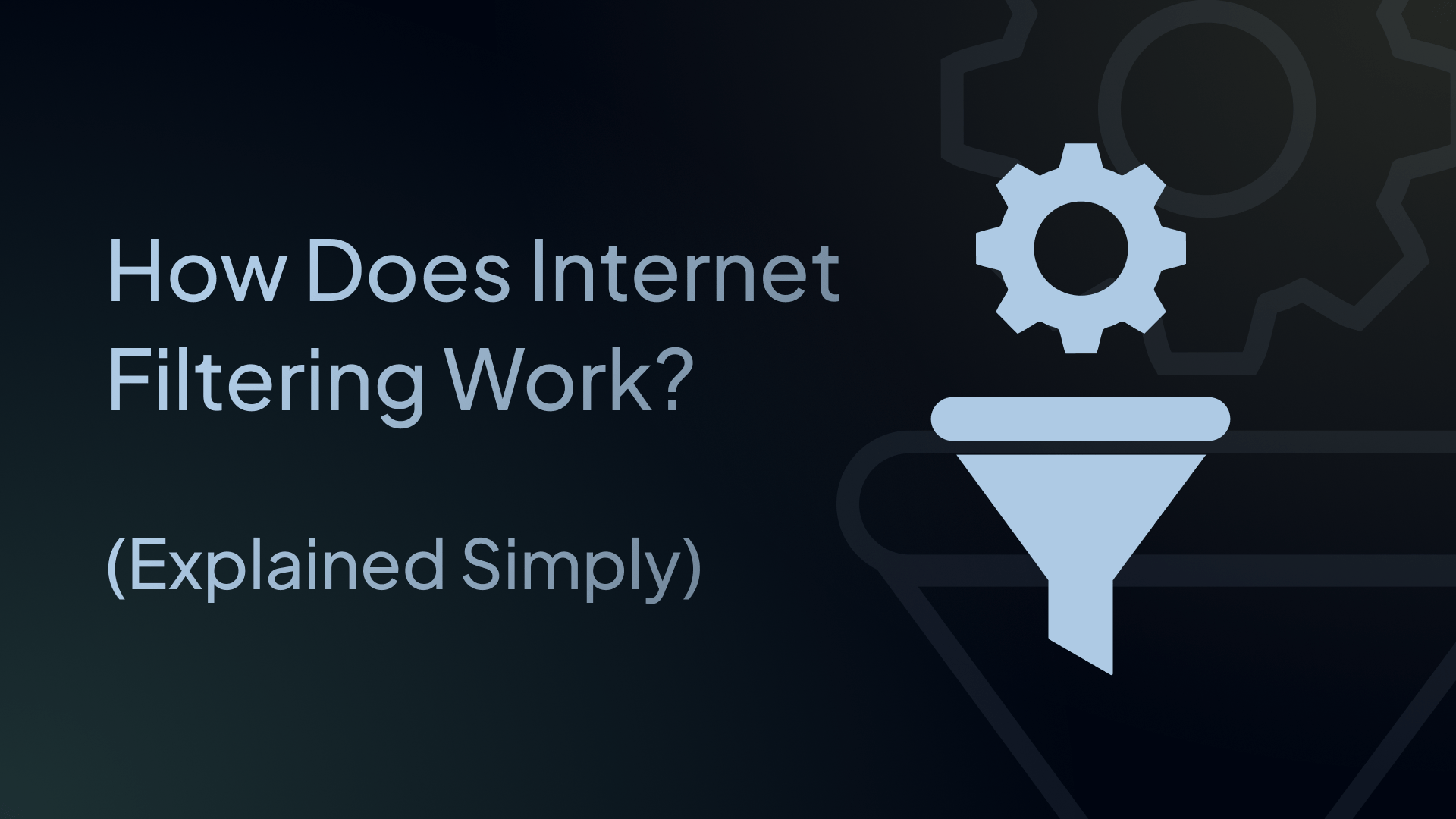How Does Internet Filtering Work? (Explained Simply)
Internet filtering is how schools, workplaces, and families control internet access and determine which parts of the web users can reach.

Every time you click a link, open a browser tab, or stream a video, your device sends a request across the internet. Before that request reaches its destination, something quietly checks whether it’s safe or allowed to continue.
That invisible checkpoint is internet filtering. It’s how schools, workplaces, and families control internet access and determine which parts of the web users can reach.
It's what helps protect against malware, block access to inappropriate content, and keeps students and employees focused.
Here’s what actually happens under the hood.
How Internet Filtering Works
Internet filtering, also known as web filtering, doesn’t change how the internet works; it adds decision points along the path between your device and the website you’re trying to reach.
Each decision point asks the same question: “Should this request be allowed?”
To answer that, filters rely on rules, category databases, and real-time threat intelligence. This entire process takes place in milliseconds, but long before the page loads on your screen.
Step 1: The Request
When you try to visit a site like youtube.com, your browser first needs to find where that site lives – its IP address. This step uses the Domain Name System (DNS).
Filtering can begin right here with DNS filtering. A DNS filter checks the domain name against a constantly updated list of approved and blocked domains.
- If the domain is safe, it returns the correct IP address, and your browser connects.
- If it’s on a blocklist – say it’s a known phishing site or adult domain – the filter stops the request instantly and blocks access to the site, showing an error or “blocked” message instead.
Because this happens before any data is exchanged, DNS filtering is extremely fast and private and is often the first line of defense.
Step 2: The Inspection
Once a request is allowed to continue, filtering can dig deeper to verify that the specific page or resource is still appropriate. This is where URL filtering comes in.
While DNS filtering only looks at the domain (example.com), URL filtering inspects the full address (example.com/chat or example.com/files/upload).
This allows more precise control:
- Allow access to youtube.com but block youtube.com/shorts
- Block file downloads from otherwise safe sites
- Enforcing acceptable-use policies for certain pages or features
URL filtering acts like a checkpoint inside the site, giving administrators precision beyond simple “allow or block” rules.
Step 3: The Content Check
Even if the website and URL look safe, the actual data still needs to be verified. That’s where content filtering comes in.
Content filters scan the material being loaded – text, images, and files – to make sure it complies with policy or safety requirements. It can either categorize the website based on its content or analyze the actual data within a web page to see if it violates a policy. For instance, they might:
- Block explicit images or language
- Detect and stop downloads of risky file types
- Prevent sensitive data (like credit card numbers) from being uploaded
- Flag content that contains malware
Modern content filters analyze website categories, scan downloaded files, and use SSL inspection (with proper certificates) when deeper analysis is needed – it’s slower than DNS filtering but more detailed.
Step 5: Enforcement and Reporting
Once the decision is made, the filter either allows the connection, blocks it, or redirects it to a safe or explanatory page.
At the same time, the event is logged. Admins get detailed analytics showing:
- Which sites are accessed most often
- What categories are being blocked
- Which devices or users trigger the most filtering events
These insights help organizations refine their rules and spot potential security issues or misuse.
The Decision Engine
Behind every request is a decision engine. Think of it as the brain making yes/no decisions in real time. This engine compares each web request against:
- Blocklists and allowlists – huge databases of categorized domains and URLs
- Policy rules – what administrators have chosen to allow or restrict
- Threat intelligence – real-time feeds of known malicious or suspicious sites
Modern web content filtering systems use AI and machine learning to keep these lists current. They can automatically classify new domains, detect unusual patterns, and adjust filtering decisions dynamically.
All of this happens in milliseconds. You click a link, the system checks its data sources, applies your policies, and decides whether to load or block the site, often before you even realize a check occurred.
Modern Internet Filtering: Unified and Cloud-Managed
In the past, DNS, URL, and content filtering operated as separate systems. Today, modern internet filtering software serves as a one-stop solution for internet control.
Cloud-managed platforms such as Control D allow you to apply policies at the network and device level, use real-time intelligence to recognize threats, and let administrators control everything from a single dashboard.
This allows them to deliver both the speed of DNS filtering and the accuracy of category-based content control, but without the heavy overhead of full page-level inspection.
That means faster decisions, fewer security gaps, and consistent protection across every location and device.
Final Thoughts
Internet filtering works by quietly evaluating each web request, checking where it’s going, what it’s loading, and whether it aligns with your safety or policy rules.
It’s a fast, automated process that keeps harmful content out and lets useful appropriate content through.
But how well they do this depends on the tool itself, which is why choosing the right filtering solution matters – the wrong tool can leave gaps in security, but the right one protects without slowing you down.
We've compared the top internet filtering solutions for 2025, breaking down features, performance, and more, so you can choose with confidence. See which solutions made the cut and find the right fit for your use case.

